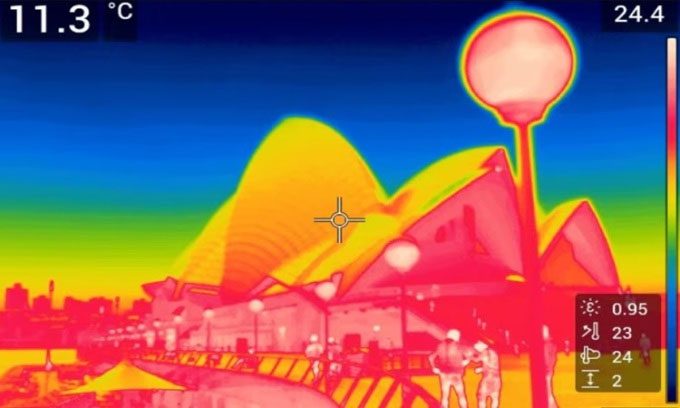The device developed by the research team at the University of New South Wales utilizes a special semiconductor component to collect the infrared radiation emitted by Earth and convert it into electricity.
The idea of generating electricity after sunset may seem impossible, but researchers at the University of New South Wales have developed new technology to achieve this, as reported by Interesting Engineering on September 28. They have recently tested the device on Earth and are planning to evaluate its viability in space. Their technology operates on the principle of generating electricity from thermal radiation, exploiting the temperature difference between Earth’s surface and the cold of space.

The research team captures an infrared image of Sydney Harbor at night to demonstrate the amount of radiation emitted at night. (Photo: University of New South Wales).
All objects, including Earth, emit infrared radiation. The newly developed device collects this emitted radiation and converts it into electricity. The key component of the device is a semiconductor, specially designed to harness this radiated heat source. When Earth emits infrared light, the semiconductor collects the energy and produces an electric current. By converting thermal radiation into electricity, the device can essentially generate solar energy at night, according to the lead researcher, Ned Ekins-Daukes.
The researchers state that the semiconductor is a type of thermal radiation diode. The material used to construct the device is similar to that of night vision equipment. “Just as photovoltaic cells generate electricity by absorbing light emitted from the sun, thermal radiation diodes generate electricity by emitting infrared light into a cooler environment,” explains Dr. Phoebe Pearce, a member of the research team. “In both cases, the temperature difference is what allows us to produce electricity.”
The efficiency of the new technology is currently quite low, but the research team remains optimistic about future improvements. The amount of electricity generated is less than 100,000 times that of photovoltaic cells, but this demonstrates the feasibility of the device, according to Professor Ekins-Daukes. The team predicts that their technology will have diverse applications that extend beyond the limits of current energy sources, such as harnessing body heat for electricity generation.
On a larger scale, Ekins-Daukes and colleagues are looking to adapt the technology for use in spacecraft. Satellites in low Earth orbit are often obscured and must rely on battery packs while in darkness. The thermal radiation diode offers a potential solution for generating electricity even without sunlight. The research team plans to send the thermal radiation diode into space within the next two years. This breakthrough could pave the way for a future where renewable energy is available 24/7.





















































